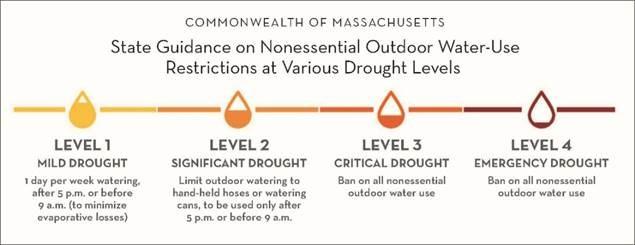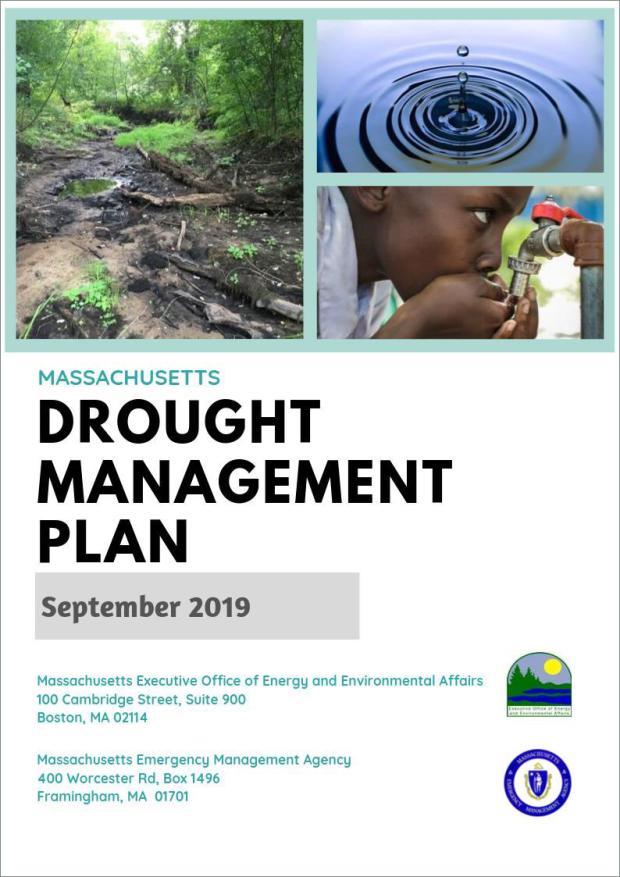There are four levels used to describe drought in Massachusetts. These levels guide restrictions on nonessential outdoor water-use and should be incorporated into every DMP.
Create a Drought Management Plan
A local drought management plan will strengthen your community’s ability to provide enough water during a drought. A DMP should outline key actions to be taken in preparation for and during a drought. It should define drought levels and assign actions appropriate to each level.
The Massachusetts Drought Management Plan, Section 8 provides guidance on local drought planning, including the following key steps in developing a local drought management plan:
- Form a drought response team and establish coordination and communication strategies within and between municipal departments, with the community, and among all relevant partner agencies and organizations.
- Forecast Supply in Relation to Demand: The goal of this step is to develop a reasonable estimate of how much water will be available under various shortage conditions, including multi-year droughts.
- Assess Options for Balancing Supply and Demand: This step focuses on two general types of drought mitigation options: reducing customer demand and augmenting supply. Demand reduction actions during a drought should be intensified as drought levels increase (see step 5).
- Establish Triggering Levels: This step identifies the specific conditions that will trigger each drought stage (for example, reservoir depths dropping below a specified level).
- Develop a Staged Drought Response: In this step, each drought stage is assigned response actions. Table 12 from the MA Drought Management Plan shows an example of a Drought Response Matrix .
- Adopt the Plan.
- Implement the Plan.
Resources for developing a local drought management plan:
- Massachusetts Drought Management Plan (2019), Section 8.1
- Drought Preparedness and Response Manual of Water Supply Practices M60from the American Water Works Association (2nd edition, 2019).
Key Resources
- Andover Drought Management Plan
- Ashland Drought Management Plan
- Drought Outreach Materials
- Massachusetts Drought Management Plan
- MassDEP Guidelines for Public Water Systems Chapter 12: Emergency Response Planning
- MassDEP Drinking Water Program: Emergency Response Planning Guide for Public Drinking Water Systems
- Emergency Planning for Water and Wastewater Utilities M19 from the American Water Works Association (5th edition, 2018)
More content for Water Suppliers and Municipal Officials:
- Water Conservation Planning Guidance
- Drought Planning Guidance (you are here)
- Water Loss Control Resources
- Customer Outreach Materials
- Healthy Lawn, Happy Summer Toolkit
- Water Rates and Data Management
- Model Bylaws
- Tools for Funding Your Water Conservation Program
Toolkit - Site Map > Municipalities > Suppliers and Water Commissioners


